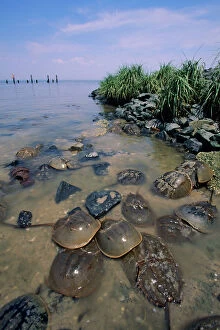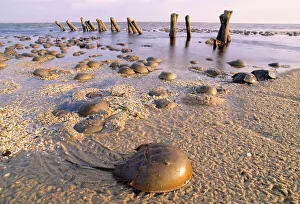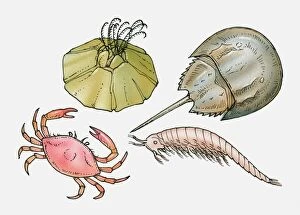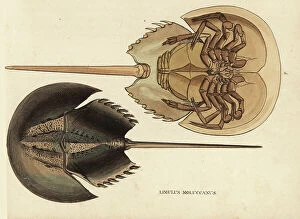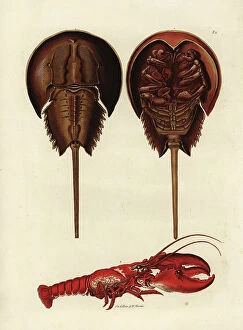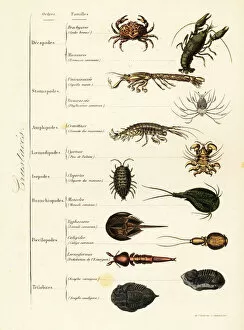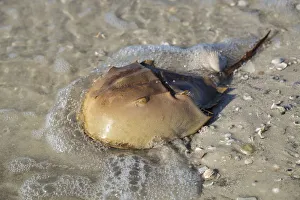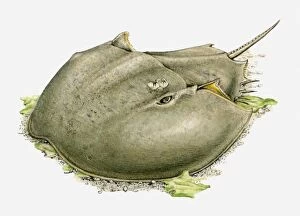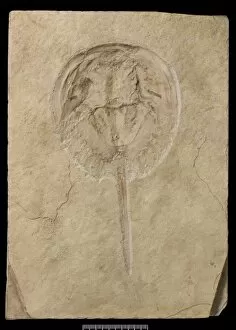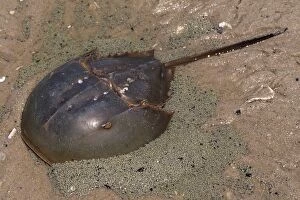Horseshoe Crab Collection
The Horseshoe Crab, a fascinating creature that can be found along the shores of Reeds Beach in New Jersey, USA
All Professionally Made to Order for Quick Shipping
The Horseshoe Crab, a fascinating creature that can be found along the shores of Reeds Beach in New Jersey, USA. With its unique appearance and ancient lineage, it never fails to capture our attention. In an illustration showcasing the diversity of marine life, we see barnacles clinging to the horseshoe crab's exoskeleton while shrimp and crabs scuttle nearby. These crustaceans are part of a vast array of species depicted in a scientific compilation from Recueil de planches sur les sciences. A captivating lithograph from 1923 transports us underwater, where the horseshoe crab gracefully navigates its surroundings. The sea groynes in the background serve as a reminder of its preferred habitat - sandy beaches exposed after tides recede. Dating back to approximately 1860, another colorful lithograph highlights arthropods like the horseshoe crab among various other creatures. Their intricate designs and vibrant hues showcase nature's artistic prowess. Honeymoon Island State Park in Dunedin, Florida is home to yet another population of these remarkable creatures. A photograph captures one such horseshoe crab basking under the sun's warm rays on this idyllic beach. An engraving from 1888 showcases detailed features of this ancient creature - its hard carapace and long tail spike make it instantly recognizable. This timeless image serves as a testament to our enduring fascination with these prehistoric beings. Finally, an illustration takes us deep into the ocean floor where we find a lone horseshoe crab exploring its mysterious domain alongside seven different fish species numbered for identification purposes. The Horseshoe Crab has stood witness to countless changes throughout history but remains resilient against time itself.

